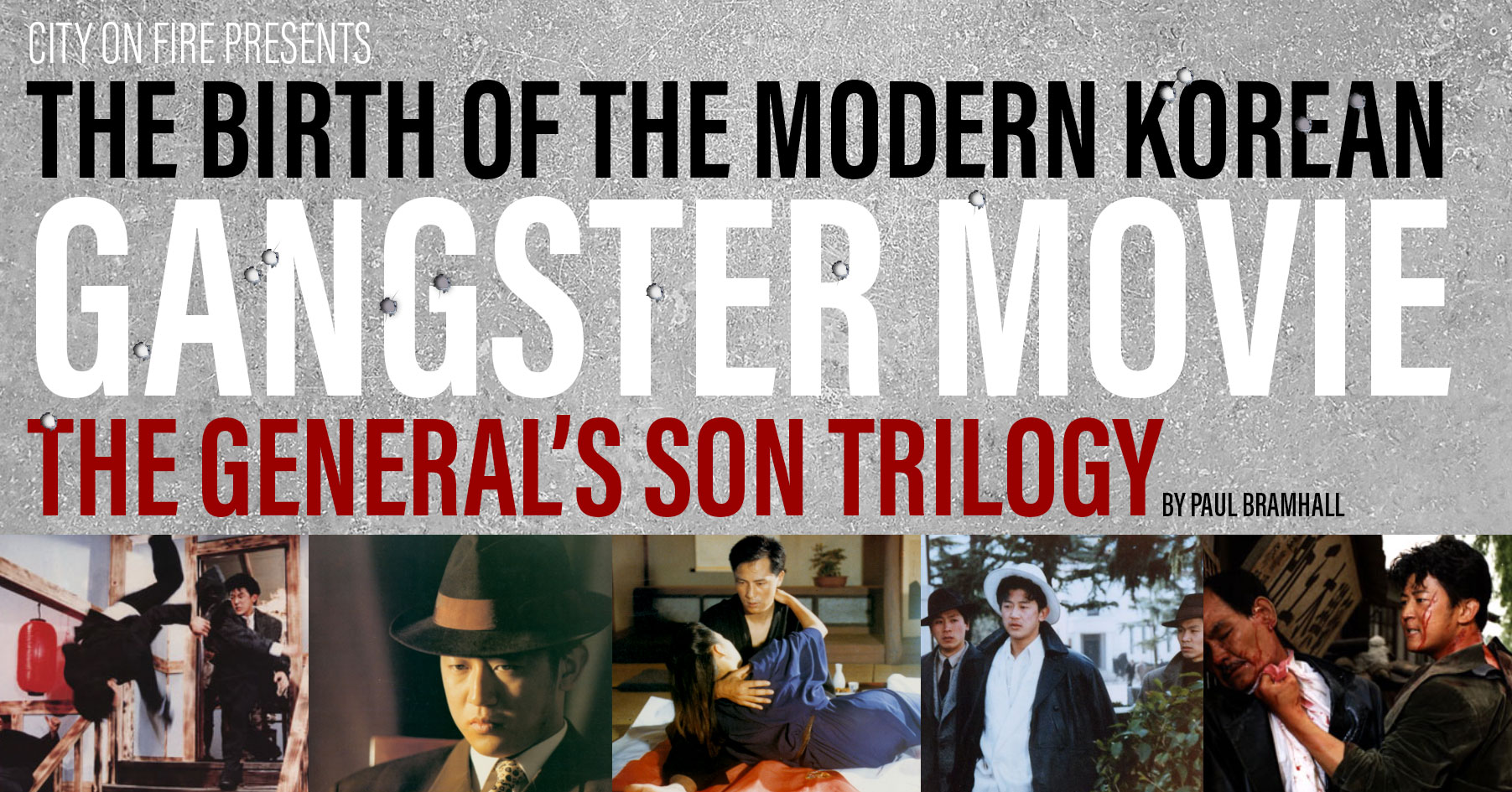 While today many would consider the Korean film industries output to be some of the best in the world, it wasn’t always this way. Just 30 years ago, Korean cinema was in crisis, going through what could easily be argued to be one of its darkest periods. To fully understand why, it’s important to consider the situation the country was in at the time.
While today many would consider the Korean film industries output to be some of the best in the world, it wasn’t always this way. Just 30 years ago, Korean cinema was in crisis, going through what could easily be argued to be one of its darkest periods. To fully understand why, it’s important to consider the situation the country was in at the time.
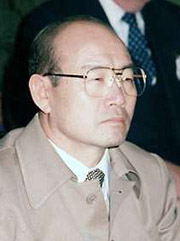
Chun Doo-hwan
South Korea finally achieved true democracy in 1987, holding its first legitimate elections in over two decades, after spending the 80’s under what was essentially a military dictatorship, led by Chun Doo-hwan. A military man who, in April 1980, became the director of the Korean Central Intelligence Agency, Doo-hwan is now largely seen as a power hungry figure, one who was willing to do whatever it takes to become President. Barely a month into his role as director of the KCIA, on 17th May he expanded martial law across the entire country, citing (unfounded) rumors of North Korean infiltration into the South. Troops were dispatched into various towns, universities were closed, and any political activity was banned.
The growing civilian unrest eventually manifested itself in the town of Gwangju, where various activists came together on 18th May to protest the increasing military presence. Doo-hwan ordered the protests to be supressed using extreme force, leading to the infamous Gwangju Massacre, in which several hundred activists and civilians where ruthlessly slaughtered by the military (A Taxi Driver covers these events). Less than a month later, President Cho Kyu-ha resigned, and Doo-hwan put himself forward as the sole presidential candidate. With no competition and the backing of the military, he was inaugurated into office on 1st September, and so began one of South Korea’s ugliest political eras.
It was an interesting time to be a part of the film industry. Any movies which had a political theme, or where seen as being even indirectly critical of the regime, where strictly banned. Likewise any talk of democratization was a sure way to find yourself being hauled off by the police and beaten to a pulp. In an attempt to take the populations mind off the political situation, Doo-hwan introduced the 3S Policy, which stood for ‘Sex, Screen, and Sports’. The idea was to make each one a major source of entertainment for the public, and for the film industry, the ironic relaxation of censorship on sex and nudity paved the way for the 80’s Korean erotic cinema boom.
In April of 1987, almost 7 years after the Gwangju Massacre, Doo-hwan announced his successor, Roh Tae-woo, along with his plans for him to take over via an indirect election. Considering this was the way Doo-hwan himself had come to power in 1980, enough time had passed for the democratization community to become enraged with a renewed vigour. After the death of a student at the hands of Doo-hwan’s Anti-Communist Unit, they took to the streets of Seoul in their thousands (1987: When the Day Comes covers these events). The protests became known as the June Democracy Movement, and fearing another repeat of what happened 7 years earlier, Tae-woo made a speech announcing the countries first direct presidential election in 16 years, which took place in December. He won the election, and true to his speech, pushed South Korea down the path of democracy, from which it hasn’t looked back from since.
For the film industry though, the new era marked tough times. After the excitement of the 1988 Olympics being held in Seoul, during the late 80’s and early 90’s South Korea was a country slowly coming to terms with the fact it had become a democracy. The impact on the film industry though was a sullen one, with interest in movies dropping to a point that cinema admissions were at an all-time low. Combine this with market liberalisation, which allowed Korea to open its doors to an influx of big budget Hollywood productions and Hong Kong action movies, suddenly local productions seemed unappealing in comparison.
There was one director though who was able to turn things around, who came in the form of revered filmmaker Im Kwon-taek. While for many fans of modern Korean cinema, Kwon-taek’s name will likely be one that brings to mind his more contemplative work (such as Festival and Strokes of Fire), throughout the 60’s and 70’s he helmed a number of action and adventure flicks. It was in 1990 that he decided to return to the gangster genre that had been off-limits for close to a decade, with The General’s Son, in what would become the first entry in a trilogy. It was a decision that proved to be a significant one, heralding the first time for a local production to hit 700,000 admissions in Seoul since 1977’s Winter Woman. After more than a decade, Korean cinema was back.
Similar to how both Wong Fei Hung and Ip Man reinvigorated the action genre in Hong Kong, so Kwon-taek turned to the real life figure of Kim Doo-han to create a protagonist for Koreans to rally around. Doo-han was a lot more rough and tumble compared to his stoic Chinese counterparts, rising up from a homeless vagabond to become the leader of the Jongro street gang, at a time when Korea was under Japanese rule. He may have been illiterate, but as a fighter, Doo-han quickly gained a reputation for being the fiercest fist around. Frequently a source of trouble for the Japanese occupiers, Doo-han flitted in and out of prison thanks to his unruly ways, until the dropping of atomic bombs on Hiroshima and Nagasaki in 1945 put an end to 35 years of occupation.
While the real life Doo-han would go on to become a politician, The General’s Son series isn’t interested in covering his political aspirations, instead choosing to focus on a youth spent street fighting his way to the top, and at the same time, redefining Korean action cinema. For the Korean audience, the appearance of Kim Doo-han on the big screen was a significant one. He’d already appeared on the small screen in the 70’s portrayed by Lee Dae-geun (and has appeared in various incarnations since – most recently in 2002’s Rustic Period), so after an absence of over a decade, a tale of the everyman Korean rising up against the Japanese occupiers was just what was needed.
Stepping into the shoes of Doo-han was a 20 year old Park Sang-min, making his screen debut, and he’d continue to anchor the other 2 entries in the trilogy. When we first meet Doo-han he’s a beggar who’s just been released from a year behind bars after a petty offence. Securing a job at the local cinema in the heart of Mapo-gu – a location that’s as prominent a feature in the trilogy as much as Doo-han himself – his measly payment consists of a handful of Won and 2 free movie tickets. When a pair of thugs relieve him of the tickets, his talent for brawling quickly sends them scampering, unbeknownst to him that the pair are actually part of a gang. Far from retaliating though, the gang leader is impressed by Doo-han’s fighting talent, and offers him a job, kick-starting his ascent through the hierarchy, matched by a slow burning disdain for the Japanese yakuza that now populate the streets.
Onscreen the aesthetic is almost like that of a pulpy gangster novel, transferred directly from the imagination to the film reel. The gangs, portrayed as tough yet righteous, come decked out in trilby hats and tailored suits with oversized shoulder pads. The Japanese yakuza spend most of their time running around decked out in black robes, katana in hand, barked at in a gravelly low pitched voice by their leader, portrayed by Shin Hyun-jun (of Bichunmoo and Shadowless Sword fame). It was an aesthetic that would come to define Korean action cinema in the 90’s, spawning countless imitations (notably 1992’s Sirasoni – another famous Korean freedom fighter from the same era), and a wave of high kicking gangster action that would only come to an end with Shiri’s international breakthrough.
Pulpy in its nature as it may be, the imagery in The General’s Son is undeniably arresting. A fight takes place in the far reaches of the screen, as a pair of trams slowly cross each other in the foreground, a gang members face is framed, so that only one piercing eye is shown looking out from beneath the brim of his hat, and the sets, though dated, are a joy to look at. The care that’s gone into constructing these shots, is indicative that Kwon-taek was a director enjoying his return to the gangster genre, while at the same time setting out the tropes that it would come to follow for the rest of the decade. The whole trilogy is one of unapologetic machismo, and equally unapologetic patriotic chest thumping, with Kwon-taek’s female-centric work of the 80’s such as The Surrogate Woman replaced by a world of Taekwondo kicks to the face and bloody noses.
https://youtu.be/BsMJ9QxSayU?t=385
Indeed perhaps it was the influx of Hong Kong action cinema that made Kwon-taek pay the level of attention that he did to the fight sequences in The General’s Son, and if that is the case then it’s just one more thing we have Hong Kong cinema to thank for. The action is distinctly Korean in its flavour, and while the multiple assailant brawls are still a staple of the Korean gangster genre today, a large part of the pleasure in watching The General’s Son trilogy is in the number of one on one fight scenes they contain. In the first instalment in particular, there’s a real focus on the style of the opponent – we get a Korean double blade master, a Japanese Judo practitioner, and a Taekwondo fighter cut from the same cloth as Doo-han. The fight with the Judo master even goes so far as to incorporate a training sequence, in which Doo-han spends his time practically theorising as to how his kicks can beat Judo’s throws.
Despite being made across a period of 3 years, all 3 of The General’s Son movies look as if they’ve been filmed back to back, with only subtle details such as Shin Hyun-jun’s changing hair length being indicative of them being made at different times. Apart from revitalising the Korean action genre, the trilogy is also notable for giving a start to several familiar names in the Korean film industry who are still active today. Out of everyone, perhaps the most recognizable is a young Hwang Jung-min (Veteran), who makes his screen debut in the first instalment as a bar tender, one with barely more than a couple of lines. Ironically Jung-min and Park Sang-min are the same age, and while Jung-min has gone on to be one of Korea’s top leading men, Sang-min remained largely relegated to the 90’s, with only a brief handful of appearances post-2000, one of which was as the villain in the poorly received 2003 action flick Tube.
In the 1991 sequel, Korea’s most well-known action director Jung Doo-hong turns up in one scene, for the sole purpose of laying a beat down on a pair of gang members. One of his first appearances in front of the camera, Doo-hong is most recognizable for his turn as the co-lead in Ryoo Seung-wan’s City of Violence, from 2006. Indeed the scene in question is an appropriate microcosm of what The General’s Son II is all about – the action. While in the first instalment Kwon-taek showed a deft hand at world building amongst the macho posturing, showing an obvious joy in exploring the sets in which the Mapo-gu of old was faithfully recreated, the sequel is keen to get straight down to business. It’s a gangster flick in the purest sense of the word, and enjoyed the same success as the original.
https://youtu.be/2-kHCbiTXkw?t=189
The sequel kicks off in identical fashion to its precursor, with Doo-han being released from prison, this time for the damage he inflicted during one his infamous brawls against the Japanese. Things are different now though, gone is the shabby clothed beggar, and in his place is the sharply dressed gang boss who’s become a hero to the local Korean community. Plot clearly takes a backseat in the second instalment, with more of an emphasis on getting from one mass brawl or one on one fight to the next. Presumably Kwon-taek was working under the assumption that Korean audiences would be familiar with events in Doo-han’s formative years, as sometimes the timeline erratically jumps forward from one scene to the next.
He gets thrown into prison, and in the next scene is released, with no real sense of how much time he’s spent inside, and the various women who enter Doo-han’s life are given the same treatment. In one scene he’ll be with one woman, and a few scenes later she’ll have completely disappeared and be replaced with another. Clearly in addition to being an excellent fighter, fearless patriot, and gang leader, he was also quite the Casanova. While for those unfamiliar with the life of Doo-han (which includes myself), such a structure may sound contrived (which it arguably is), but it’s never confusing. It comes across more like Kwon-taek felt an obligation to include certain events that took place in Doo-han’s life, however never gave much thought to how they fit into the bigger picture of the story he wants to tell. So we just get these chronologically inserted tangents which move the timeline along, but do little for the stories narrative.
Despite it lacking the narrative strength of its predecessor, The General’s Son II delivered on what the fans of the original wanted to see more of, and that was Doo-han kicking Japanese posterior. If we use that as a measurement of success, then it’s easy to see why the sequel delivered the goods, and a third round was quickly ushered into production. However the third time wasn’t quite the charm this time around, and The General’s Son III was beaten at the 1992 box office by Marriage Story, a romantic comedy about a warring couple that served as an early template for movies like My Sassy Girl. It was a time of gradual shifting in Korean cinema, with Kwon-taek himself switching focus to the type of movie he’d become best known for with 1993’s Sopyonje, which steeped itself in the traditions of Korean traditional folk singing (and notably became the first Korean flick to clock over one million admissions in Seoul).
While the third instalment may be the weakest of the trilogy, it’s still far from being a bad movie, especially for those clocking in purely for the spectacle of watching sharply dressed gangsters kick people in the face. Interestingly The General’s Son III seems keen to broaden its scope, with proceedings initially opening with an exiled Doo-han eventually ending up in Manchuria, when he and his series rival/friend (played by Lee Il-jae) find themselves attempting to make money from the opium trade. In the end though it all feels like a precursor for Doo-han to return to Mapo-gu and finally face off against Shin Hyun-jun. Although in all fairness, the series never feels like it’s building up to such a confrontation, and could well be debated to end things in such a way because those involved realised there wasn’t going to be a fourth.
Both the structure and tone of the closing chapter feels more loose than its predecessors. There’s a running joke of Doo-han and his love interest (well, actually just his love interest) being excessively vocal during their nights together, which is supposed to be comedic, but somehow doesn’t sit well with the overall tone. It’s ironic then, that the love interest here is the most fleshed out in terms of backstory and character, more so than any other female character in the series. Kwon-taek had already proven himself to be a capable director of female-centric stories during the 80’s, so his handling of the material here is perhaps indicative of his uncertainty of how to insert such content, into what was an overwhelmingly macho series to date.
The General’s Son III also wears its Hong Kong influences on its sleeve more than any of the previous entries. Throwing any sense of realism to the wind, when Doo-han is (once again) thrown in prison for his brawling, he’s offered a chance to be released if he can defeat 3 Japanese fighters consecutively. Precursing a similar setup in Ip Man by 16 years, the fight is staged in the prison hall with the guards overseeing proceedings, while the hall itself is surrounded by kneeling Japanese decked out in their white gi’s. Doo-han takes them on adorned in a black shirt and trousers, before the judo master’s constant takedowns makes him throw his shirt off. The sight of a bare chested, black trousered hero facing off against a room full of Japanese masters, marking a clear nod to a similar scene in Bruce Lee’s Fist of Fury.
While audiences are right to expect the series closer to build to a suitable climax, the ending of The General’s Son III finishes much the same as the previous instalments, leaving Doo-han’s adventures with an avenue to continue along. Looking at them in retrospect, personally I feel that the closing scenes of the trilogy are what Kwon-taek intended, regardless of if a fourth outing would be commissioned or not. The early 90’s was a time when the international market was a distant consideration, and Korean movies were very much being made strictly for a Korean audience, with no thought paid to overseas distribution. From that perspective, the domestic demographic would already have been familiar with the life of Doo-han, and would have been content knowing he’d continue on to become a politician.
On a similar note, watching the trilogy today in 2019, the thought of viewing any of the entries as a standalone exercise doesn’t seem appropriate. Each one of The General’s Son movies feels intrinsically linked to the other, and as such feel like they should be viewed as a 5+ hour binge watch, or at least 1 per night. They’re a unique snapshot of early 90’s Korean cinema, at a time when the industry was trying to find its feet again after being repressed for so long. Kwon-taek, or anyone else for that matter, could have no idea that a little over 10 years later movies like OldBoy, Memories of Murder, and A Tale of Two Sisters would kickstart The Korean Wave, which saw the whole world paying attention to its cinematic output. By this time Korean cinema wasn’t just back on its feet, it was running full spring.
But for every mass brawl witnessed in the likes of A Dirty Carnival, The New World, and Gangnam Blues, their blueprints can be traced back to The General’s Son. Kwon-taek himself couldn’t resist revisitng the gangster genre one last time for 2004’s Raging Years (aka Low Life). With a story that follows another rags to riches gangster through the tumultous 15 year period spanning 1957 – 1972, while the time period may be different, in every other way Raging Years feels like a spiritual continuation of The General’s Son series. The trilby hats, leather jackets, and high kicking action is all present and accounted for, and while for all intents and purposes it was a production out of time with where the industry was in the mid-00’s, there can be little doubt that fans of Doo-han’s adventures will find plenty to enjoy.
For the remainder of much of the 90’s though, the influence of The General’s Son saga was inescapable. It’s dynamic high kicking fight scenes became the go-to flavour for Korean action, and many of Korea’s biggest stars today had their careers kicked off through headlining gangster movies, that at some point involved unleashing an array of kicking fury. From the likes of Park Joong-hoon in 1994’s The Rules of the Game, to Jung Woo-sung in 1996’s Born to Kill, to Lee Jung-jae in Fire Bird from the same year. Thanks to Taekowndo being taught at school and a compulsory military service, most of Korea’s young leading men are proficient at throwing a kick, and its 90’s cinema output frequently proved this.
The influence wasn’t only limited to the industries fresh faces, with many of the Korean martial arts stars who’d found fame working in the kung-fu genre of the 70’s and 80’s, now turning their attention to how they could transpose their talents to the local gangster scene. While the likes of Dragon Lee, Casanova Wong, and Hwang Jang Lee where all past their high kicking prime by the time the 90’s rolled around, that didn’t prevent them from getting in on the action. Casanova Wong made his final screen appearance, as well as directing, the 1994 gangster flick Bloody Mafia, in which he unleashed his kicks for the last time for our viewing pleasure, while Dragon Lee and Hwang Jang Lee would reunite to work on Emperor of the Underworld (which Hwang also directed) from the same year. Seeing some of the old school kung-fu genres most familiar faces decked out in trilby hats and oversized coats is a pleasure in itself.
For many of us viewers in the west the influence of The General’s Son trilogy on Korea’s gangster genre has largely been an invisible one, mainly thanks to their lack of availability. While Kwon-taek’s seminal works such as Soponje and Jagko have received Blu-ray releases thanks to the stellar work of the Korean Film Archive, for a long time it seemed these pulpy slices of gangster mayhem were destined to receive short thrift. Thankfully that changed in early 2019, when the complete trilogy was given the 4K remastering treatment, and released as a boxset on both Blu-ray and DVD, allowing a new generation to appreciate what can be considered as the original modern Korean gangster flicks. If you’re a fan of Korean cinema and you’ve yet to see them, do yourself a favour and go check them out.

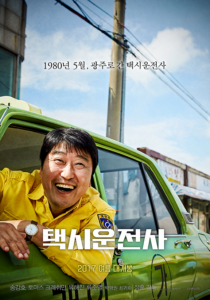

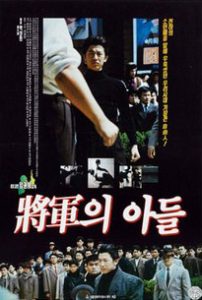
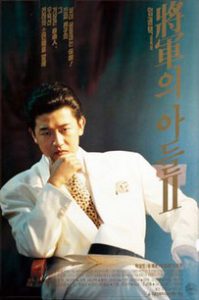

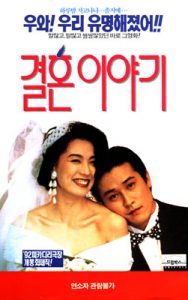
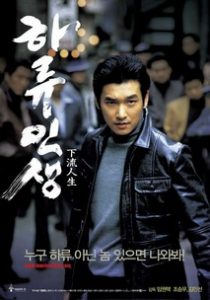

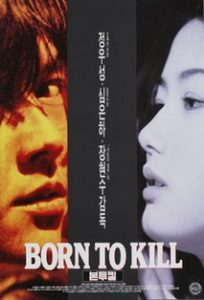


Awesome essay! I’ve wondered what Korean action cinema in the 90’s was like, and after finally watching 1995’s The Terrorist, I’ve wanted more.
I’m glad the DVD box set is region free! I’ll be buying The General’s Son soon!
Cheers Andrew! ‘The Terrorist’ is a great example of 90’s Korean action (there was notably an unrelated sequel). Very few of these flicks made it onto DVD, but they can be found with a bit of legwork. Tai Seng released both ‘Killing Game’ and ‘Underground’, while the likes of ‘Fire Bird’, ‘Born to Kill’, ‘The Rules of the Game’, and ‘Sirasoni’ (although this one lacks English subs) all made it onto DVD in Korea. Look forward to hearing your thoughts on the trilogy!
Thanks for the links! Unfortunately it looks like Born to Kill is out of print, but I’m sure someone will sell theirs. I lucked out with The Terrorist since it’s also out of print and I happened to buy some guy’s legit copy on ebay for 25 bucks.
I wonder how Doo-han would be portrayed in today’s era. I would hope the market wouldn’t try making the character more commercial and “politically correct.”
I’m glad Korea doesn’t have an NRTA where he would most likely be made into a flawless white knight or get punished for his wrongdoings in the end.
I bought The General’s Son boxset on YesAsia.com, and I’m happy I did so! I went for the DVD set instead of the Blu-ray, because it was cheaper and had the same special features. Still, I could see the details in the restoration, and was impressed with how “new” the films looked.
I’ve watched the first two films, and I’ll be watching part 3 soon. I’m enjoying what I see with the deliberate pacing and all the recognizable themes and tropes from other gangster films, but with the Korean “flavor.”
Park Sang Min is great as Kim Doo-han, and while the fights really display the blueprint for the future of Korean choreography, I was disappointed at how often Park was doubled. I didn’t expect him to be a TKD prodigy, but I wished there were more fights like him and the Judo Master where he wasn’t doubled so much.
I’m looking forward to Part 3!
Happy to hear you’re enjoying the trilogy Andrew! Did you spot the early appearances from Hwang Jung-min (the first one) and Jung Doo-hong (the sequel)? If you find you’re still craving some trilby hat wearing Taekwondo action after you wrap up the 3rd instalment, definitely check out ‘Raging Years’!
I finished the trilogy, and all in all I liked it. I’m gonna have to look back to see the cameos I missed.
I’m still disappointed that Park was doubled so much. Especially in part 3, I felt like they didn’t even try to hide it since you could see the stuntman’s face clearly.
The parts where Park was doing his own action were good. They looked raw and honest without being fancy, so it really contrasted with how precise the double’s kicks were.
I did order Raging Years off eBay, so I’d like to see how the modern version of The General’s Son would look.
Someone on eBay was selling their Limited Edition Raging Years for 15 bucks, so I jumped at that chance. Maybe I need to give it another go, but unfortunately I have nothing nice to say about the film.
While Doo-han in The General’s Son is not a saint, I felt like the lead character here was even less sympathetic. He reminded me of one of Doo-han’s flunkies and it was not interesting to watch this miserable jerk abuse his wife and essentially be a loser through the film. His worst moment is when his wife gets beaten up and he runs away.
The movie itself felt like an HBO series condensed into an hour and forty minutes, so it felt very undeveloped. To top it all off, there was very little action and those scenes ended immediately after they began.
It seems like Gangnam Blues is what Raging Years should have been more like.
Three decades later, and the influence of ‘The General’s Son’ trilogy can still be seen in the likes of 2019’s ‘Master Heaven: The Greatest Fighter’.
Good read. I was just thinking about this the other day — when did Korean cinema ‘get good’? Sure, it had its heyday in the 50s & 60s, but I can’t recall something worth watching previous to, say, Shiri.